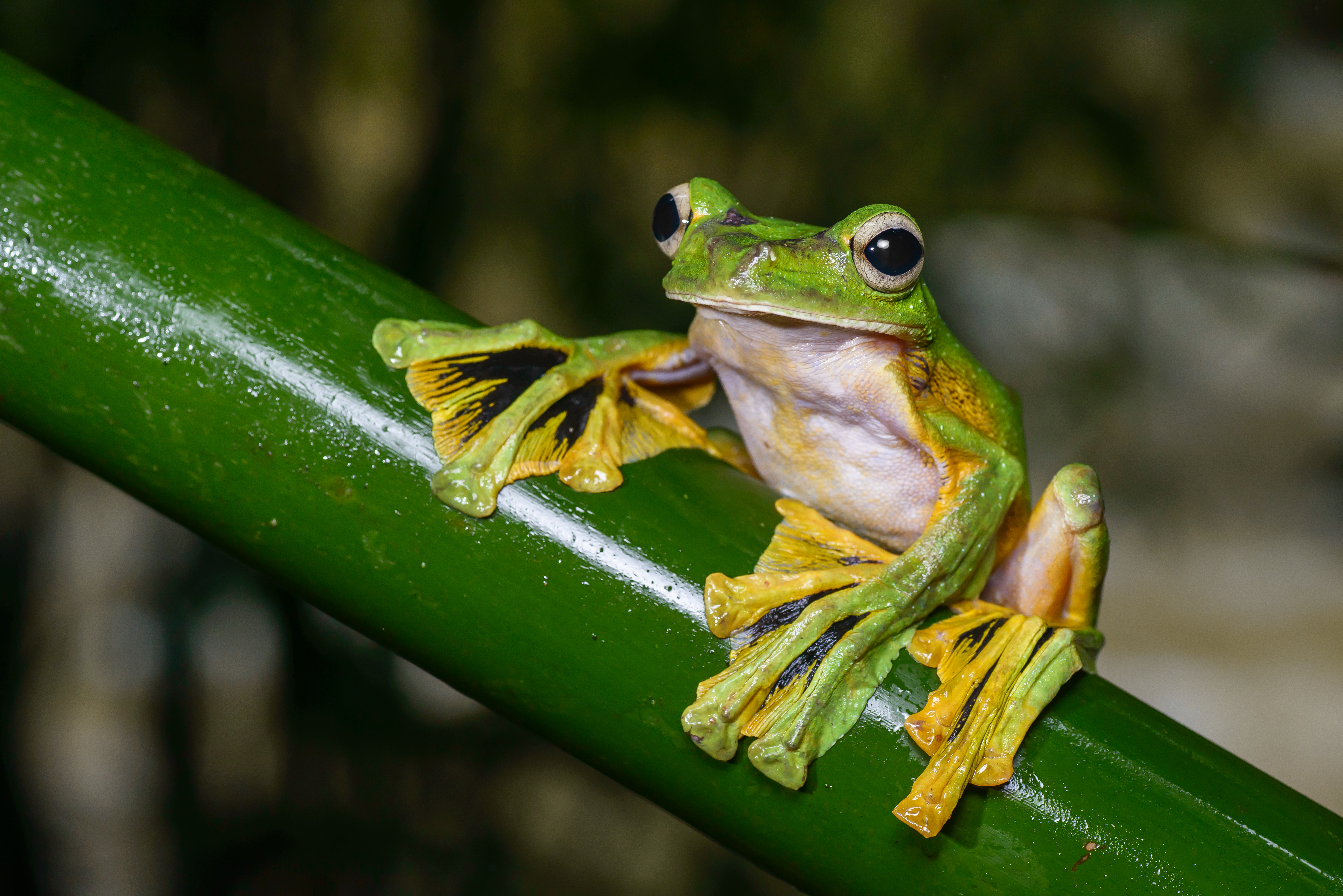Flying Frogs on:
[Wikipedia]
[Google]
[Amazon]
 A flying frog (also called a gliding frog) is a
A flying frog (also called a gliding frog) is a
 A flying frog (also called a gliding frog) is a
A flying frog (also called a gliding frog) is a frog
A frog is any member of a diverse and largely carnivorous group of short-bodied, tailless amphibians composing the order Anura (ανοὐρά, literally ''without tail'' in Ancient Greek). The oldest fossil "proto-frog" ''Triadobatrachus'' is ...
that has the ability to achieve gliding flight
Gliding flight is heavier-than-air flight without the use of thrust; the term volplaning also refers to this mode of flight in animals. It is employed by gliding animals and by aircraft such as gliders. This mode of flight involves flying a s ...
. This means it can descend at an angle less than 45° relative to the horizontal. Other nonflying arboreal
Arboreal locomotion is the locomotion of animals in trees. In habitats in which trees are present, animals have evolved to move in them. Some animals may scale trees only occasionally, but others are exclusively arboreal. The habitats pose nu ...
frogs can also descend, but only at angles greater than 45°, which is referred to as parachuting.Emerson, S.B., Travis, J., & Koehl, M.A.R. (1990). "Functional complexes and additivity in performance: A test case with 'flying' frogs." ''Evolution'', 44(8), 2153-2157.
Evolution
Gliding flight has evolved independently several times among frogs from bothNew World
The term ''New World'' is often used to mean the majority of Earth's Western Hemisphere, specifically the Americas."America." ''The Oxford Companion to the English Language'' (). McArthur, Tom, ed., 1992. New York: Oxford University Press, p. ...
(Hylidae
Hylidae is a wide-ranging family of frogs commonly referred to as "tree frogs and their allies". However, the hylids include a diversity of frog species, many of which do not live in trees, but are terrestrial or semiaquatic.
Taxonomy and ...
) and Old World (Rhacophoridae
The Rhacophoridae are a family of frogs that occur in tropical sub-Saharan Africa, South India and Sri Lanka, Japan, northeastern India to eastern China and Taiwan, south through the Philippines and Greater Sundas, and Sulawesi. They are co ...
) families.Emerson, S.B., & Koehl, M.A.R. (1990). "The interaction of behavioral and morphological change in the evolution of a novel locomotor type: 'Flying' frogs." ''Evolution'', 44(8), 1931-1946. This parallel evolution
Parallel evolution is the similar development of a trait in distinct species that are not closely related, but share a similar original trait in response to similar evolutionary pressure.Zhang, J. and Kumar, S. 1997Detection of convergent and paral ...
is seen as an adaptation to their life in trees, high above the ground. Characteristics of the Old-World species include "enlarged hands and feet, full webbing between all fingers and toes, lateral skin flaps on the arms and legs, and reduced weight per snout-vent length". These morphological changes contribute to the flying frogs' aerodynamic abilities.
Taxonomy
Alfred Russel Wallace made one of the earliest reports of a flying frog.Oliver, J.A. (1951). "'Gliding' in amphibians and reptiles, with a remark on an arboreal adaptation in the lizard, ''Anolis carolinensis carolinesis'' Voigt." ''The American Naturalist'', 85(822), 171-176. The species he observed was later described by George Albert Boulenger as '' Rhacophorus nigropalmatus''. Flying or gliding frogs includes members of these genera: *'' Agalychnis'' (Hylidae) *'' Ecnomiohyla'' (Hylidae) *'' Polypedates'' (Rhacophoridae) *'' Zhangixalus'' (Rhacophoridae) There are 380 species of flying frogs.References
Frogs Gliding animals {{Anura-stub